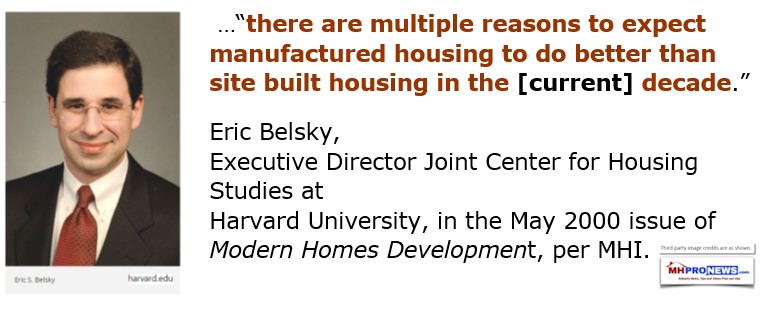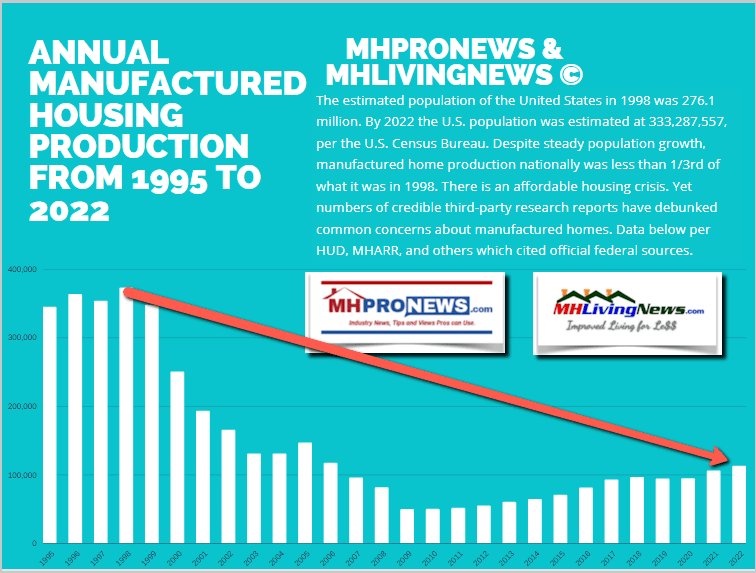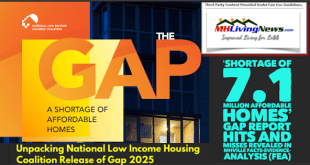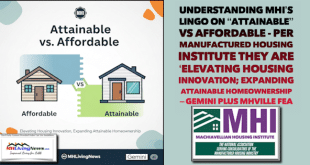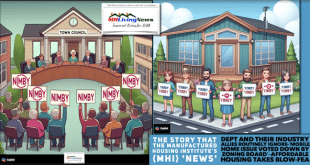On October 12, 2023 the U.S. Government Accountability Office (GAO) published a new report entitled “The Affordable Housing Crisis Grows While Efforts to Increase Supply Fall Short.” The GAO also recently stated: “The Department of Housing and Urban Development (HUD) leads housing efforts at the national level” and “Manufactured homes—homes that are built in factories—can be an affordable option for some, including lower-income homebuyers.” Per the GAO website: “What GAO Does,” “GAO provides Congress, the heads of executive agencies, and the public with timely, fact-based, non-partisan information that can be used to improve government and save taxpayers billions of dollars. Our work is done at the request of congressional committees or subcommittees or is statutorily required by public laws or committee reports, per our Congressional Protocols.”
Inflation. Rising interest rates. Paychecks that routinely fail to keep pace with the rising cost of living, including the cost of housing. These are clear and present risks to the American Dream of Homeownership.
As the purportedly nonpartisan GAO pointed out, “Manufactured homes—homes that are built in factories—can be an affordable option for some, including lower-income homebuyers.”
Before jumping into the manufactured housing data that follows, it is helpful to know what the National Association of Home Builders (NAHB) and the National Association of Realtors (NAR), both via X-posts (formerly Twitter) said.
Housing starts grew 7% in September to an annual rate of 1.36 million, 7.2% lower than the same time last year. Single-family home starts were up 3.2% to an annual rate of 963,000. https://t.co/NVQdAZOrfA #realestate #housing #economy pic.twitter.com/FyyBjRCmRr
— NAHB ? (@NAHBhome) October 18, 2023
Not only does NAHB not hide their numbers, they arrange to report their data via news interviews such as the one in the example below.
NAHB CEO Jim Tobin, with a great appearance on Fox Business today, explained the complexities facing first-time home buyers and the dire warnings flashing in the #realestate market. https://t.co/3IglRKLq2x
— NAHB ? (@NAHBhome) October 17, 2023
From the National Association of Realtors (NAR), are the following X-posts (previously known as “tweets). Note that NAR breaks down the information they provide in several ways that gives them an opportunity to communicate information to various market segments (first time buyers, investors, cash buyers, etc.).
Instant Reaction: Mortgage Rates, October 19, 2023. “Since the first week in September, home buyers have faced weekly increases in mortgage interest rates. Today’s release at 7.63% shows they are close to the historical average since 1971 of 7.74%.” https://t.co/4dil5OyfWl pic.twitter.com/JMarceanqj
— NAR Research (@NAR_Research) October 19, 2023
First-time buyers were responsible for 27% of sales in September; Individual investors purchased 18% of homes; All-cash sales accounted for 29% of transactions; Distressed sales represented 1% of sales; Properties typically remained on the market for 21 days. #NAREHS pic.twitter.com/8xRCNR2Vxo
— NAR Research (@NAR_Research) October 19, 2023
Note that NAR’s Lawrence Yun is practically begging for more housing starts. Again, the information is broken down in a manner that makes it easy for certain groups to relate to the information.
“For the third straight month, home prices are up from a year ago, confirming the pressing need for more housing supply,” Yun said. #NAREHS
— NAR Research (@NAR_Research) October 19, 2023
Total housing inventory registered at the end of September was 1.13 million units, up 2.7% from August but down 8.1% from one year ago (1.23M). Unsold inventory sits at a 3.4-month supply at current sales pace, up from 3.3 months in August and 3.2 months in September ’22. #NAREHS
— NAR Research (@NAR_Research) October 19, 2023
The median existing-home price for all housing types in September was $394,300, an increase of 2.8% from September 2022 ($383,500). All four U.S. regions posted price increases. #NAREHS pic.twitter.com/pokBEPoxaB
— NAR Research (@NAR_Research) October 19, 2023
“As has been the case throughout this year, limited inventory and low housing affordability continue to hamper home sales,” said NAR’s Lawrence Yun. “The Federal Reserve simply cannot keep raising interest rates in light of softening inflation and weakening job gains.” #NAREHS
— NAR Research (@NAR_Research) October 19, 2023
Year-over-year, sales dropped 15.4% (down from 4.68 million in September 2022). #NAREHS pic.twitter.com/Km9yEQC0zd
— NAR Research (@NAR_Research) October 19, 2023
Total existing-home sales waned 2.0% from August to a seasonally adjusted annual rate of 3.96 million in September. #NAREHS pic.twitter.com/gfxOiWwrqK
— NAR Research (@NAR_Research) October 19, 2023
MHProNews provided some information on the above from NAR earlier this week as provided by the Wall Street Journal. That report unpacks what the data could mean for growth oriented manufactured housing professionals and affordable housing seeking consumers, IF certain corrective steps were taken.

But for whatever reasons, it seems that the Manufactured Housing Institute (MHI) is unable to get good federal laws enforced. Part of what the GAO report and analysis, linked here, unpacks is the troubling history of manufactured housing lending in the 21st century. “Credit (financing) is the lifeblood of housing,” said former Harvard Joint Center of Housing Studies fellow Eric Belsky. Per MHI’s Modern Homes Development, Belsky also said (circa 2000) that “there are multiple reasons to expect manufactured housing to do better than site built housing in the [current] decade.”
For the past few months, MHProNews and MHLivingNews has been doing periodic tests using the Bing AI search tool instead of Google. Let’s note in passing that as an informed researcher on this topic, so far, Bing’s AI appears to offer a superior result to Google. That said, this inquiry was made to Bing AI on 10.20.2023 at about 10:41 AM ET.
> “Eric Belsky purportedly said “there are multiple reasons to expect manufactured housing to do better than site built housing in the decade.” circa 2000 can you confirm the source(s) for that remark?”
Here is Bing’s AI response.
 manufacturedhomelivingnews.com Manufactured Home Living News
manufacturedhomelivingnews.com Manufactured Home Living News


